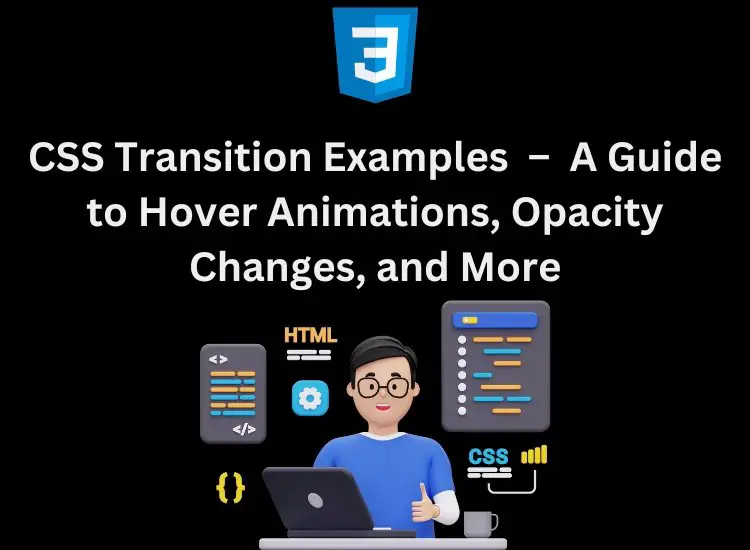CSS Transitions
CSS transitions are a powerful tool for adding engaging and interactive animations to your website or application.
With just a few lines of code, you can create smooth transitions between different states of an element, such as changing its position, size, opacity, or color. In this blog post, we’ll explore some practical examples of CSS transitions, focusing on hover animations and opacity changes.
So let’s dive in and discover how to bring your web designs to life!
Basic Hover Animation
One common use case for CSS transitions is creating hover effects. By applying a transition property to an element’s CSS class, you can smoothly animate changes when the element is hovered over. Here’s an example of a simple hover animation that scales up an image when the mouse hovers over it:
.image {
transition: transform 0.3s ease;
}
.image:hover {
transform: scale(1.2);
}
In the above code, the transition property specifies that any changes to the transform property will be animated over a duration of 0.3 seconds with an easing effect. When the .image class is hovered over, the transform property is changed to scale(1.2), resulting in a smooth zoom effect.
Opacity Transition
Another popular animation effect is changing an element’s opacity. You can fade an element in or out using CSS transitions. Here’s an example that gradually fades in a hidden element when hovered over:
.hidden-element {
opacity: 0;
transition: opacity 0.3s ease;
}
.hidden-element:hover {
opacity: 1;
}
In the above code, the initial state of the .hidden-element class has an opacity of 0. When the element is hovered over, the opacity is changed to 1, causing a fade-in effect. The transition property ensures that the change is animated smoothly over a 0.3-second duration.
Complex Hover Animation
CSS transitions can also be used to create more complex hover animations by combining multiple CSS properties. Here’s an example that animates the background color and text color of a button when hovered over:
.button {
transition: background-color 0.3s ease, color 0.3s ease;
}
.button:hover {
background-color: #ff7f50;
color: #fff;
}
In the above code, the .button class has a transition property that affects both the background-color and color properties. When the button is hovered over, the background color changes to #ff7f50, and the text color becomes white (#fff), creating an eye-catching effect.
Conclusion:
CSS transitions provide a straightforward and efficient way to add engaging animations to your web designs.
By specifying transition properties and applying them to different CSS classes, you can create hover effects, opacity changes, and other eye-catching animations.
The examples covered in this blog post should give you a good starting point to explore the world of CSS transitions further.
Experiment with different properties, durations, and easing functions to create unique and compelling animations that enhance the user experience on your website or application.





0 Comments